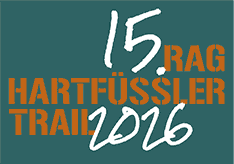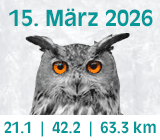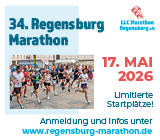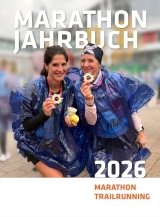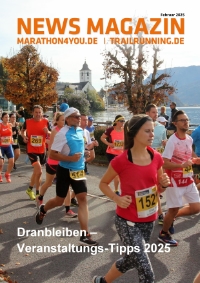marathon4you.de
Nothing is impossible (english Version)
What can’t you buy?
Once dried, we make our way to the next destination, the four inverted pyramids of the Tokyo Big Sight Exhibition Center. This is easily located once you have mastered the intricacies of the public transport system. Here we will get our start numbers.
Cordoned off and guarded by helpers. Access is only permissible in the possession of a valid registration confirmation. Everything is highly organized and without hectic. A helper gives me my start package (start number, race chip and oversized clothes bag) with both hands. We bow and smile in the familiar manner.
In the next hall there is a short history of the Tokyo marathon. In show cases the medals and running shoes of the winners. The Tokyo Marathon is rapidly leading to shifts in the ranking of the largest city marathons worldwide. In just a few years it is already on a par with the so called “big five runs”. What is missing, however, is the long standing history as, for example, the Boston Marathon. What dominates here is tailored to the masses. Participants are lured into the consumer world of clothes, photos, food and drink. I am looking for something in particular, a carp that I want to attach to my start number. In Japan the carp is regarded as a good luck charm and symbol of endurance and strength. Only at the end of the long corridor, does one receive the event t-shirt, so to speak, as making it through the consumer jungle! Kay with his 1.85 cm stands out amongst the people like a sore thumb. Japanese are on an average 8 cm smaller than the Germans, but therefore, way approximately 19 kilos less. Surely, this must mean my t-shirt size “small” will fit. I tear open the bag and to my disappointment it is too large.
A city does not get enough
It’s crazy, 335,000 runners crowd through the gates of the city, but only 11 percent have received the coveted race number. Who? It is purely the luck of the draw! To be absolutely safe you can book a ticket through a travel agent, which will cost you as a foreigner 110 Euro.
From 1981 through 2006 the Tokyo marathon was called the Tokyo International Men’s Marathon and is today the men’s qualifying event for a coveted ticket to the Olympic Games. More facts: BMW are the official automotive sponsors. 85.920 people visit the sports fair in three days. Over 2 million spectators line the 42.195 km course and cheer the runners on. 40 trucks bring the runners baggage from the start line to the finish line. 30 pace makers ensure for the right finishing time and entertainment. There are 6,000 dancers and musicians, over 5,000 security personnel, 390 medics, 987 toilets and 66 defibrillators and to round the figures off, 2,878 runners from overseas that take part in the 2 kilometer Friendship Run.
The day we unite
That is the motto of the marathon. The rain stopped sometime in the night. Dawn creeps over the houses like a cloth which is drawn from a sculpture. There is a dreary sky above the city where scarcely a ray of sunlight omits through the clouds. Tokyo has it all - just no space. Buildings, cars and people are crowded into this confined city. One has the feeling that the mass of runners and volunteers will burst the seams of an already packed Tokyo.
Madam Butterfly is wearing a start number and Jesus lives
We experience Japan at the highest level of culture: The conductor, who gets off the train, or the road worker who waves a passing car through the construction zone bow as a sign of mutual respect. There is a sick person who is wearing a surgical mask for our protection against infection not theirs. A volunteer takes my XXL clothes bag and places it into a parked truck near the starting line. On my way to the starting block I come across an unusual sight of Japanese tradition, a Geisha. With her face painted white and her brightly colored robe, she looks absolutely spectacular.
Since the 1800, Geishas have worked in tea houses, and it was their task to entertain the gentlemen with small talk, singing or small tricks. Today they run marathons! In my start block there are already thousands of runners standing between tightly packed business complexes and high rises, that project into the sky like pencils. It is oddly quiet. How can so many people make so little noise? 4 helicopters hover above and instead of “eye of the tiger” classical music plays. Unbelievable, but I can actually hear a bird sing. Then in the distance the start gun sends us off on our way in a rain of confetti. The procession of shuffling runners of all ages moves into gear. Humming like a beehive, the runners make their way through the neighborhood at snail pace. I’m nervous, how does it feel to be pushed through the streets by enthusiastic runners?
It stands to reason that my “Polar” watch can’t locate a satellite signal. Cheers from spectators greet us from the road side. Not only the Sakura, “cherry blossom”, Hanami festivities bring the people out of their homes in their thousands. Hanami is an important Japanese custom and is held all over Japan in spring. Hanami literally means viewing flowers, but it generally indicates cherry blossom viewing. Cherry blossom festivals take place all over the country. Most of them are held between March and May, though other regions have them in January, February, and June, based on their location. Festival dates are usually determined with reference to cherry blossom forecasts and vary from year to year. The cherry tree and is the official tree of Tokyo and more than 50 percent of the trees in Japan are cherry trees. Nobody is pushing or shoving and I am not being trod on from behind. Runners keep their distance to the man in front. This reminds me of a carnival parade, but without the floats. There is a color of costumes from brilliant to bizarre, from daring to graceful; Mickey and Minnie Mouse, Superman and Batman, and the bride and groom. Between them runs Jesus!





 Tokio Marathon
Tokio Marathon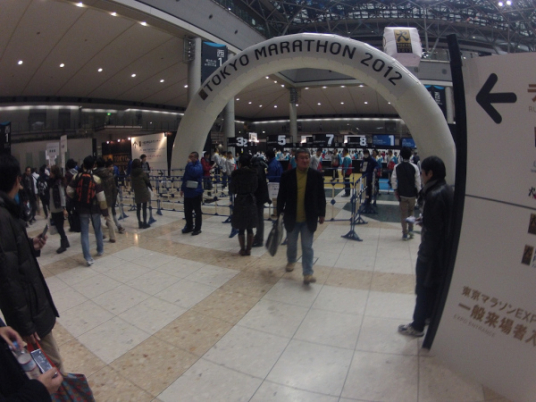

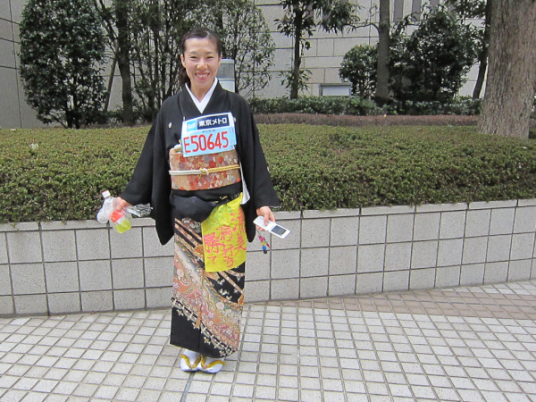
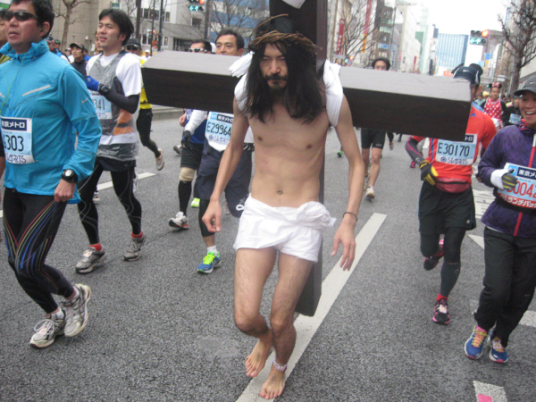




 zur�ck zur �bersicht
zur�ck zur �bersicht

